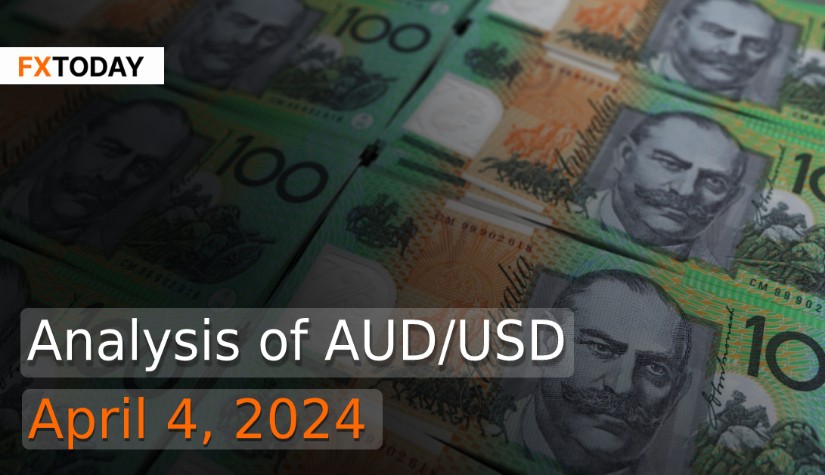Australian Dollar Surges, Consumer Sentiment Declines
The Australian dollar surged past its 200-day moving average on Thursday, reaching $0.6568 against the U.S. dollar following a dip in the latter, while traders anticipated Australian rates remaining steady until November.
Meanwhile, Australian consumer sentiment saw a decline in March from its 20-month high in February. The Westpac Melbourne Institute Consumer Sentiment Index dipped 1.8%. Concerns over the economic outlook and household finances overshadowed any improvements. Despite the Reserve Bank of Australia's tempered stance on interest rates, consumers remained apprehensive, hoping for a more positive message.
In the retail sector, February saw a modest increase in sales, attributed partly to popular events like Taylor Swift concerts. However, annual sales growth remained modest due to high interest rates constraining disposable incomes. Food retailing and household goods retailing experienced slight declines during the month.
In February, the Australian Consumer Price Index (CPI) inflation held steady, slightly below expectations, contributing to a less aggressive stance from the Reserve Bank of Australia (RBA). Data from the Australian Bureau of Statistics indicated a year-on-year CPI inflation increase of 3.4% in February, just under the anticipated 3.5%, maintaining stability compared to the previous month.
The main drivers of this inflation were housing, food, and alcohol prices. Excluding volatile items like fresh food and automotive fuel, underlying CPI inflation decreased to 3.9% in February from 4.1% in January. In Sydney and Melbourne, inflation was further boosted by events featuring American pop singer Taylor Swift, leading to higher hotel prices in these cities. However, accommodation and airfare prices in other parts of Australia declined due to weakened travel demand.
This data follows closely after the RBA recently softened its hawkish stance, no longer explicitly mentioning the possibility of further interest rate hikes. Despite a significant decrease from the 30-year highs seen in early 2023, Australian CPI inflation remains considerably above the RBA's target range of 2% to 3% annually. This trend is expected to prevent the central bank from reducing interest rates in the short term.
The housing shortage in Australia was highlighted by the CEOs of major banks, who urged local governments to expedite planning approvals to address the issue. This shortage, compounded by years of low interest rates, is hindering first-time homeowners and exacerbating skill shortages across the nation.
In international trade, China announced the lifting of anti-dumping and anti-subsidy tariffs on Australian wine, marking the end of three years of punitive measures. This decision follows an improvement in bilateral relations, with China gradually removing trade barriers on various Australian exports.
Amidst these developments, the U.S. dollar remained near recent highs following comments from Federal Reserve Chair Jerome Powell indicating potential interest rate cuts. However, an unexpected slowdown in U.S. services growth tempered the dollar's strength. Despite this, the dollar remains the best-performing G10 currency for the year so far.
The dollar has strengthened by about 3.3% this year against major currencies, with net-long dollar bets reaching their highest since September 2022. March saw further slowing in U.S. services industry growth, alongside a drop in business input prices, suggesting a favorable inflation outlook. However, inflation moderation is expected to be gradual, with some industries experiencing continued pressure on input prices. While labor market conditions are easing, skilled workers remain in short supply, particularly in sectors like construction.
Financial markets are adjusting their expectations regarding the timing and magnitude of Federal Reserve interest rate cuts, with expectations for a cut in June and a total reduction of around 75 basis points this year. This aligns with the Fed's own projections and reflects ongoing economic and inflationary dynamics. As a result, the Australian dollar could experience some short-term strengthening, but long-term appreciation may be constrained by the contrasting economic performance and returns of the two economies.
Data for Technical Analysis (1H) CFD AUD/USD
Resistance : 0.6580, 0.6581, 0.6584
Support : 0.6574, 0.6573, 0.6570
1H Outlook
Source: TradingView
Buy/Long 1 If the support at the price range 0.6569 - 0.6574 is touched, but the support at 0.6574 cannot be broken, the TP may be set around 0.6581 and the SL around 0.6567, or up to the risk appetite.
Buy/Long 2 If the resistance can be broken at the price range of 0.6580 - 0.6585, TP may be set around 0.6589 and SL around 0.6572, or up to the risk appetite.
Sell/Short 1 If the resistance at the price range 0.6580 - 0.6585 is touched, but the resistance at 0.6580 cannot be broken, the TP may be set around 0.6574 and the SL around 0.6587, or up to the risk appetite.
Sell/Short 2 If the support can be broken at the price range of 0.6569 - 0.6574, TP may be set around 0.6565 and SL around 0.6582, or up to the risk appetite.
Pivot Points Apr 4, 2024 02:38AM GMT
|
Name
|
S3
|
S2
|
S1
|
Pivot Points
|
R1
|
R2
|
R3
|
|---|---|---|---|---|---|---|---|
| Classic | 0.6567 | 0.657 | 0.6574 | 0.6577 | 0.6581 | 0.6584 | 0.6588 |
| Fibonacci | 0.657 | 0.6573 | 0.6574 | 0.6577 | 0.658 | 0.6581 | 0.6584 |
| Camarilla | 0.6575 | 0.6576 | 0.6576 | 0.6577 | 0.6578 | 0.6578 | 0.6579 |
| Woodie's | 0.6567 | 0.657 | 0.6574 | 0.6577 | 0.6581 | 0.6584 | 0.6588 |
| DeMark's | - | - | 0.6572 | 0.6576 | 0.6579 | - | - |
Sources: Investing 1, Investing 2
















